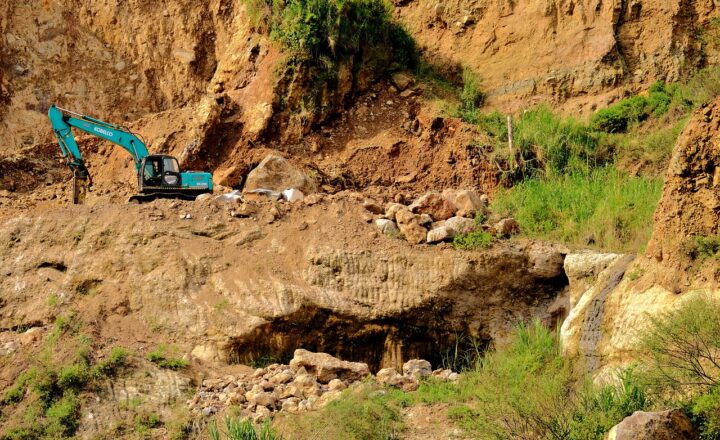The Lost Civilization of Great Zimbabwe and Its Massive Stone Ruins
November 15, 2024

Great Zimbabwe, the name of both a remarkable civilization and its stunning stone ruins, has captivated historians, archaeologists, and travelers for centuries. Nestled in the southeastern hills of Zimbabwe, this ancient site is a testament to the ingenuity of a culture that thrived in Southern Africa from the 11th to the 15th century.
1. The Emergence of Great Zimbabwe
The Great Zimbabwe civilization emerged as a mining center for gold, and its economy was bolstered by trade with distant lands. The strategic location near trade routes connecting East Africa to the Middle East meant that Great Zimbabwe became a cosmopolitan hub. The people of Great Zimbabwe engaged in extensive trade, exchanging gold, ivory, and textiles for goods like beads, ceramics, and iron tools from countries far beyond their borders.
The political structure of Great Zimbabwe is believed to have been a form of monarchy, with a king or chief at the helm and a hierarchy that organized labor and resources. This central leadership allowed for a well-structured society capable of undertaking large-scale construction projects, most notably the expansive stone structures that still stand today.
2. The Architectural Marvels
One of the most striking features of Great Zimbabwe is its remarkable architecture, primarily made of granite stones. The most famous structure is the Great Enclosure, a wall that encloses an area about 360 meters in circumference, and is constructed using massive stone blocks fitted together without the use of mortar. Intriguingly, this construction technique showcases an advanced understanding of both engineering and aesthetics, with the walls curving gently to create an impressive and imposing appearance.
Another significant structure is the Hill Complex, which is located on a rocky hill at the center of the site. This complex served as a royal palace and contains numerous platforms, terraces, and enclosures. The design of the buildings adheres to principles of harmony and balance, emphasizing the sophisticated engineering and architectural skills of its builders.
The ruins at Great Zimbabwe cover about 722 hectares, indicating a large population density at its peak. Its grand stone edifices are remnants of a civilization that was masterful in its use of local materials, capable of creating monuments that would endure the test of time.
3. The Cultural Significance
The civilization of Great Zimbabwe was a melting pot of cultures, influences from other regions contributing to its development. Artifacts recovered from the site indicate that the people were skilled craftsmen, creating intricate pottery, metalwork, and textiles. They also engaged in spiritual practices centered on ancestral worship and the veneration of spirits, reflecting a community deeply connected to its ancestry and cultural heritage.
The civilization left behind fascinating artifacts, including those related to their belief systems, such as the famed soapstone birds that symbolize spiritual and political significance. These artifacts provide insight into the beliefs and customs of the people who lived in Great Zimbabwe, allowing historians to piece together aspects of their daily life, rituals, and governance.
4. Decline and Fall
By the 15th century, the once-thriving Great Zimbabwe began to decline. Several factors contributed to this downturn, including environmental changes that may have led to drought, loss of trade routes, and internal conflicts. As resources became scarce, the population began to dwindle, prompting many to leave the city in search of better opportunities elsewhere.
Some historians suggest that political strife and the over-exploitation of resources further exacerbated these issues. Eventually, the core of the civilization was abandoned, and the site fell into ruin, leaving behind stone structures that would become a source of mystery for future generations.
5. Rediscovery and Preservation
In the late 19th century, European explorers and archaeologists began to take an interest in the Great Zimbabwe ruins, recognizing their significance. Initial theories suggested that the site was built by foreign influences, overlooking the achievements of the indigenous populations. However, over time, research has established that the Great Zimbabwe civilization was indeed a native African culture that exhibited remarkable creativity and sophistication.
In 1986, Great Zimbabwe was designated a UNESCO World Heritage Site, acknowledging its cultural, historical, and architectural importance. Efforts have been made to preserve the ruins, promote tourism, and educate visitors about the significant contributions of the Great Zimbabwe civilization to African history.
6. Modern Impact and Legacy
Today, Great Zimbabwe stands as a symbol of African heritage and pride. It has inspired numerous movements focused on reclaiming cultural identity in post-colonial Zimbabwe. The monument remains a focal point for historical and cultural studies, emphasizing the capabilities and achievements of African civilizations throughout history.
Visitors to the site can walk through the remnants of this once-great civilization, exploring the intricate stonework and absorbing the rich history. Great Zimbabwe is more than just an archaeological site; it serves as a powerful reminder of the complexities and resilience of African societies.
Conclusion
Great Zimbabwe is a striking narrative of human ingenuity, cultural richness, and historical significance. It encapsulates a time when Africa was at the center of trade, culture, and complex societies. As we continue to explore and understand this remarkable civilization, we not only honor its legacy but also encourage appreciation for the vast tapestry of human history. The story of Great Zimbabwe is not just one of the past; it threads through the narratives of current societies striving to connect with their roots.
If you ever find yourself journeying through Zimbabwe, take the time to visit this remarkable site and uncover the stories that lie within the walls of Great Zimbabwe. The ancient stones have much to teach us about resilience, community, and creativity, serving as a lasting legacy for generations to come.








